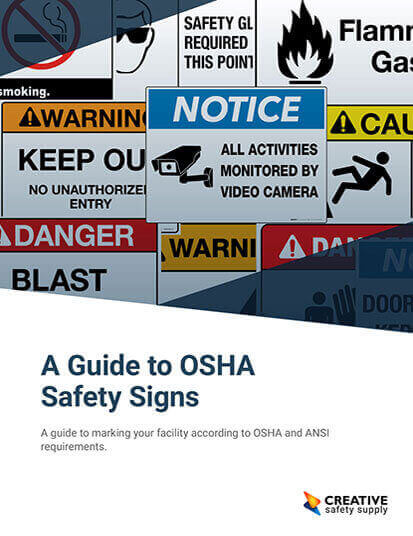Using metrics is one of the most effective ways to evaluate and analyze safety in the workplace and this one stop shop calculator will help you find the relevant safety rates for your facility. Incident rates are utilized by OSHA to measure safety performance across industries and by safety managers to track past performance and establish benchmarks for the future.
Simply use the information from your OSHA Form 300: Log of Work-Related Injuries and Illnesses and your OSHA Form 300A: Summary of Work-Related Injuries and Illnesses. Enter the relevant information into the fields below and calculate! With just a few points of data you can find the Total Case Incident Rate, OSHA’s Recordable Severity Rate, and more. Analyze results to look for areas in your safety program needing improvement, use NAICS codes to see how your organization is measuring up in the industry, and start monitoring safety rates long term.
Understanding Key Workplace Safety Metrics
Below is a comprehensive reference table of essential safety metrics that can help your organization track, assess, and improve workplace health and safety performance. From calculating your Accident Frequency Rate (AFR) to using a DART Rate Calculator for determining the Days Away/Restricted or Job Transfer Rate, each metric offers valuable insights. You’ll also find guidance on the Lost Time Injury Frequency Rate (LTIFR), the Lost Time Case Rate (LTIR), and the Lost Workday Rate (LWDR), each of which provides a clearer understanding of how incidents translate into lost work hours. Additionally, tools like a Severity Rate Calculator and methods for determining the Total Case Incident Rate (TCIR), Total Recordable Injury Frequency Rate (TRIFR), and OSHA Recordable Severity Rate (TRSR) ensure you can accurately measure the full impact of workplace incidents. By leveraging these metrics, your organization can identify safety trends, implement preventive measures, and maintain a proactive approach to hazard control.
| Name | Acronym | Definition | Formula |
|---|---|---|---|
| Accident Frequency Rate Calculator | AFR | Number of incidents resulting in lost work time due to injury or illness per 100 employees. | (Number of Accidents × 200,000) / Total Hours Worked |
| Days Away/Restricted or Job Transfer Rate | DART | Number of incidents resulting in lost work time, restricted duties, or job transfers per 100 employees. | (Number of DART Cases × 200,000) / Total Hours Worked |
| Lost Time Injury Frequency Rate | LTIFR | Number of injuries resulting in lost time per 1,000,000 hours worked. | (Number of Lost Time Cases × 1,000,000) / Total Hours Worked |
| Lost Time Case Rate | LTIR | Number of incidents resulting in lost time per 100 full-time employees. | (Number of Lost Time Cases × 200,000) / Total Hours Worked |
| Lost Workday Rate (Lost Time Injury Rate) | LWDR | Number of lost workdays due to injury or illness per 100 full-time employees. | (Number of Lost Workdays × 200,000) / Total Hours Worked |
| Severity Rate | SR | Number of lost days relative to total hours worked per 100 full-time employees. | (Number of Lost Workdays × 200,000) / Total Hours Worked |
| Total Case Incident Rate (OSHA Recordable Incident Rate) | TCIR | Number of OSHA recordable incidents (injuries and illnesses) per 100 full-time employees. | (Number of OSHA Recordable Cases × 200,000) / Total Hours Worked |
| Total Recordable Injury Frequency Rate | TRIFR | Number of fatalities, lost time injuries, restricted duty cases, and other injuries requiring medical treatment per 1,000,000 hours worked. | (Number of Recordable Injuries × 1,000,000) / Total Hours Worked |
| OSHA Recordable Severity Rate | TRSR | The average number of lost and restricted days per OSHA recordable incident. | (Number of Lost Work Days + Number of Restricted or Transferred Days) / Number of OSHA Recordable Incidents |


